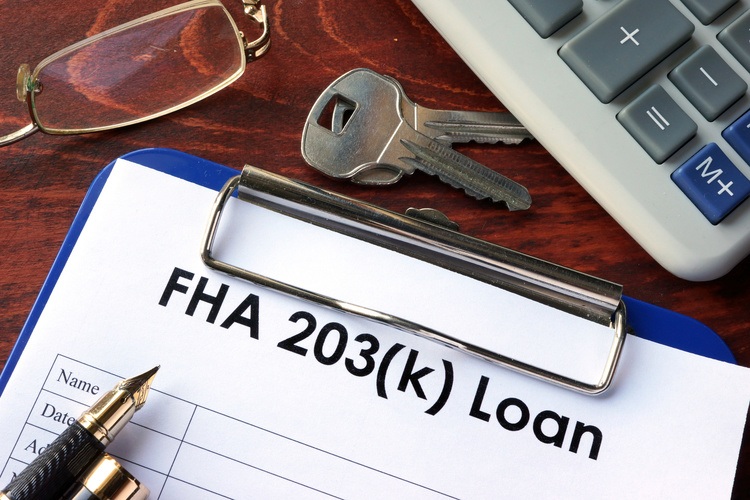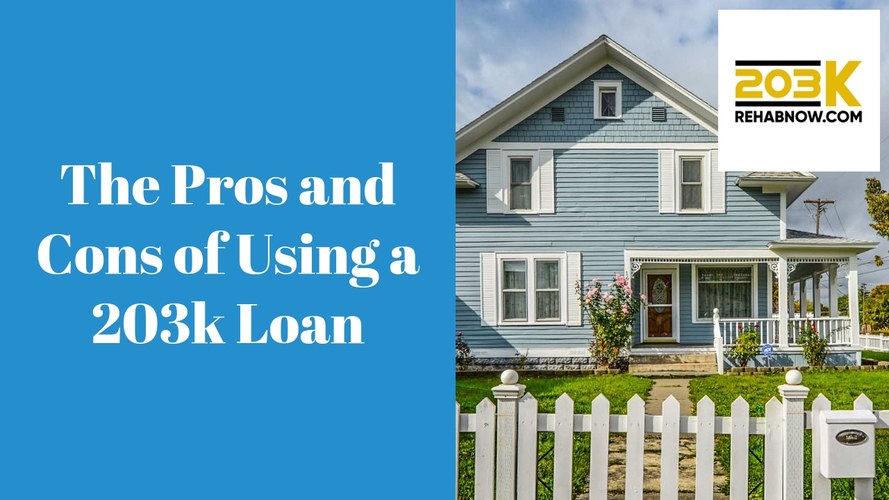Good Idea or Bad Idea When Considering a 203k Loan
Over 50% of homebuyers struggle to find the right house.
Does that sound familiar?
You find the perfect neighborhood after weeks of searching, but all the local properties need renovating. Older homes lack amenities modern buyers are looking for.
Starting renovations after purchasing a property isn’t possible for many because 33% of all clients are first time buyers. This percentage highlights the importance of loans like the 203k.
A 203k loan allows you to borrow a set amount of money for both purchasing and renovation. FHA guaranteed loans are less risky for lenders, meaning they get approved more quickly.
An FHA approved lender has to be used.
Qualifying is simple: you need to be a nonprofit or homeowner and provide a proposal of intended renovations. Is the work cosmetic or structural? Your answer determines the type of 203k right for you.

Full or Streamlined?
Full 203k Loan
Full rehab loans finance both major and minor repairs before closing. Even foundation and roof work is eligible. Lenders track all upgrades made, meaning they approve a loan they’d otherwise reject.
The extensive nature of the program requires a 203k consultant. Usually, they are licensed general contractors and home inspectors.
To prove their skill, consultants have to submit documents to the HUD, the Department of Housing and Urban Development. The FHA 203k Consultant Roster only allows HUD-approved advisors.
The Upside
- Down payments are kept low. An FHA 203k requires a 3.5% deposit for up to $417,000, compared to conventional loan down payments of 5% or more. On average an 11% deposit is made, well below the 20% down payment rule.
- One monthly payment. The amount you pay is a combination of your mortgage and renovations, with tax-deductible interest.
- Loan amount based on as-improved price. Conventional loans base payment amounts on the current value of the property. A 203k looks at the value upgrades will add.
The Downside
- Contractors need to be approved. DIY isn’t an option. Lenders give you money to improve your new home, meaning they determine who carries out the work. All contractors will be screened by the FHA.
- You pay twice the mortgage insurance. An upfront mortgage insurance premium is required in addition to yearly mortgage insurance. If your down payment is above 20%, you won’t pay the additional amount.
- Closing an FHA 203k will take longer. The average closing time is six months. It’s a more intense process compared to standard mortgages because of federal government paperwork.
- Not all lenders know the 203k process. Only approved FHA lenders can advise you properly and answer any queries you have.
Streamlined 203k Loan
This is a less extensive mortgage plan.
Lenders allow 140 days for completion, but the average is 45 to 90 calendar days. Less time also means less renovations – only minor upgrades are permitted by the FHA.
Non-luxury repairs like kitchens, bathrooms, and energy efficiency are among the upgrades commonly approved. These can increase value by 137%.
Improvements made can’t exceed $35,000. The house must also be lived in during the process. A full 203k loan allows up to six months of mortgage payments if you’re unable to stay during renovations.
Streamlined 203k rehab loans are more accessible from lenders and involve less paperwork. Similar to the full 203k, the loan is fixed rate and can cost more than the property value.
The Benefits
- Ideal for first time homebuyers. The minimum down payment is 3.5%, same as a standard 203k. Lower deposits allow more investment in cosmetic upgrades.
- No minimum repair fee. The FHA takes material costs, etc into consideration. Projects priced below $15,000 can be completed by contractors or yourself, but a letter to prove your capabilities is needed.
- A contingency reserve is optional. Standard 203k loans demand buyers have a contingency reserve of between 10% and 20%, but streamlined 203k mortgages don’t.
The Drawbacks
- Tight timeframe. Property upgrades must be started within 30 days of securing the 203k loan and completed within six months.
- The property must be inhabitable during renovations. You can’t be away from home for longer than 30 days. If upgrades mean you can’t stay at home, a full 203k loan provides a more generous renovation period.
- Licensed contractors may be needed. Improvements priced between $15,000 and $35,000 require FHA approved contractors. An inspection is also required to check all work was completed.
Alternative Rehab Loans
Is the FHA 203k right for you?
Investors can’t take out standard or streamlined 203k loans. For small buy and hold investors there’s The Fannie Mae HomeStyle Renovation Loan. This can also be used by homebuyers.
What Is a HomeStyle Loan?
HomeStyle loans follow conventional mortgage guidelines and has fewer limitations. The most you can borrow is $413,000. Buyers can perform both cosmetic and structural improvements.
First-time buyers only need a 3% deposit, but regular homebuyers need a down payment of 5% or over. Once closing is complete, upgrades need to begin within three days.
Big projects require a consultant. Your lender can suggest an appropriate HomeStyle consultant to oversee the work across 140 days. You can also hire contractors of your choice or complete work yourself.
If you choose a contractor, lenders will review them to ensure they’re qualified for the intended renovations. DIY projects carried out by the homeowner can’t cost over 10% of the as-completed value.
How Are VA Loans Different?
A VA Renovation Mortgage Loan is a specialist mortgage, designed for eligible veterans.
No down payments are required.
VA rehab loans are guaranteed by The Department of Veteran Affairs, meaning they’re free from private mortgage insurance requirements. But only private lenders can issue the loan.
Home upgrades can’t cost over $35,000 or include structural repairs – it is for minor improvements only.
Buy and Renovate
FHA 203k loans are ideal for buyers looking to renovate.
You roll all the costs together, only have to deal with single monthly payments and can decide between structural or cosmetic options.
If you would like to learn more or want to start a loan application, visit our website or call us for further details.

